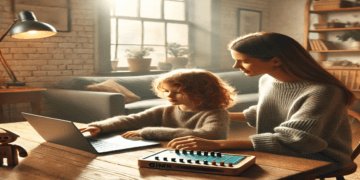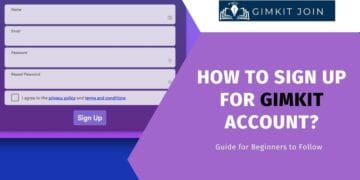In classrooms everywhere, we see so many different students. They come from lots of places. Have unique stories and different backgrounds. It is super important that every single student feels like they belong. They should also have a fair chance to learn. They need to do well. Games like Gimkit are great for learning. You can learn more about using Gimkit. But we really need to check our questions. We don’t want to accidentally make some students feel left out. We don’t want them to feel treated unfairly.
Gimkit offers a fun way to check what students know. As teachers, we need to make sure our games are fair for everyone. This means we think carefully about every question we write. We want to create inclusive Gimkit games, avoiding bias. This blog post will give you some simple ideas. You can do this easily.
Understanding Bias in Quiz Questions
Let’s chat a bit more about bias. What does it mean when we write quiz questions?
What is Bias in Question Design?

Bias in question design happens when some students get an unfair edge. This happens because of how a question is written. It might be easier for some students to answer. This is because of their life experiences. It might be harder for others. This is because of their background. This is just not fair. We want all students to have the same real chance. We want them to show what they know.
Why Avoiding Bias Matters So Much

When questions show bias, it really hurts kids. It can make them feel like they are not smart enough. It can make them feel like they don’t belong in your class. This can make them not want to learn anymore. It can even make them feel bad about themselves. We want to build every student up. Want to make sure everyone feels good about learning and want to create equitable Gimkit games. This means we are super careful about the questions we ask. We want every student to have a true chance to show their knowledge.
Common Types of Bias to Watch Out For
Bias can sneak into questions in many ways. We need to be like friendly detectives. We need to look for these hidden biases. Here are some common types of bias to watch out for. Check for these when you make your Gimkit games:
Cultural Bias:
This happens when our questions are about things common in just some cultures. Some students might know the answer fast. This is because of their culture. Other students might have no idea. This is cultural bias.
- What it means: Cultural bias in questions means the questions favor facts or experiences from specific cultural groups. Students from other cultures might face a disadvantage.
- Example: Imagine asking about a famous dish from one culture. You don’t explain what it is. Students from that culture will likely know. Others won’t.
- My tip for avoiding: Try to use examples that many different people know. If you must use a cultural example, give a little info about it first. Pick examples that are more worldwide. Think about things most people can easily learn about. This helps make culturally sensitive Gimkit questions.
Gender Bias:

Gender bias in questions means they favor one gender. This can be in the words we pick. It can be in the stories we tell. It can even be in what we guess about jobs.
- What it means: Gender bias in questions means the questions unfairly lean towards boys or girls. This can be in the language. It can be in the roles people play.
- Example: A question talks about all scientists as “he.” This makes it seem only men are scientists.
- My tip for avoiding: Use words that don’t pick just one gender. Use “they” instead of “he” or “she.” Do this when you can. Show men and women in all types of jobs. Show that anyone can be anything. This helps in avoiding gender bias in quiz questions.
Socioeconomic Bias:

This bias happens when we guess things about students. We guess what they have or what they’ve done. This is based on their family’s money. This is socioeconomic bias.
- What it means: Socioeconomic bias in questions means questions guess all students have the same access. This means money, things, or experiences. This isn’t true for everyone.
- Example: Asking about a fancy vacation. Some students might have done it. Many others won’t have had that chance.
- My tip for avoiding: Ask questions about things most students would know. Don’t ask about things that cost a lot. Don’t ask about things only some families can do. Try making questions that don’t assume wealth. Use common knowledge questions. Give students the info they need right in the question.
Disability Bias:

Disability bias in questions makes them harder for students with disabilities. This could be because of how the question is set up. It could be because of the words. We should learn more about accessibility in EdTech.
- What it means: Disability bias in questions creates problems for students who have disabilities. This can be in how the question looks. It can be in the words. It can be in the content itself.
- Example: A question is just a long block of text. No pictures. This is tough for a student who struggles with reading many words.
- My tip for avoiding: Think about making Gimkit games accessible for all learners. Use clear, simple words. If you use pictures, add a description for students who can’t see them. Think about students who need more time. Ask if the question’s format works for everyone. This is part of accessibility in education.
Linguistic Bias:

Linguistic bias is when we use language that is too hard. Some students might not get it. This is tough for students learning English. It’s also hard for students with smaller vocabularies. You can also find general tips for writing clear quiz questions.
- What it means: Linguistic bias in questions means hard words are used. Or complicated sentences. This makes it tough for students learning English. Or students with different language backgrounds.
- Example: A question has many big, rare words. Or it has complicated sentences.
- My tip for avoiding: Use clear, simple, direct words. Keep your sentences short. Don’t use words that aren’t common. If you have to use a harder word, try to explain it. This helps make unbiased questions in Gimkit.
Stereotyping:

Stereotyping in questions means we say things that aren’t fair. Or they aren’t true. This is about groups of people. This can be based on race. It can be where they come from. Can be their religion and anything that puts them in a group.
- What it means: Stereotyping in questions means they push harmful ideas. They push untrue ideas about groups of people. These ideas are often too simple. They are also negative.
- Example: A question says all people from one country are good at a sport.
- My tip for avoiding: Be super careful with the words you pick. Make sure you aren’t saying anything harmful. Don’t say anything untrue about any group. Focus on what individuals do. Focus on what they achieve. Don’t use stereotypes about groups. This is key for anti-bias education.
Practical Tips for Designing Inclusive Gimkit Questions

Here are some easy tips. They will help you make your Gimkit questions more inclusive for everyone. This is for your whole class:
- Mix Up Names and Examples: When you write your questions and answers, try to use names from different cultures and backgrounds. Also, think about your examples too. Do they show different kinds of people? Do they show people in different life situations? This helps promote diversity and inclusion in the classroom.
- Read Your Questions Out Loud: This is a simple trick. But it really works wonders. When you read your questions aloud, you often hear what sounds off. You hear what might be hard to get. It can help you catch biased words. You might not mean it.
- Think About Different Views: Try to put yourself in your students’ shoes. Think about students from varied backgrounds. Think about students with different experiences than you. Would the question make sense to them? Could it confuse anyone? This helps with culturally responsive teaching.
- Ask Others for Their Thoughts: It is always a great idea to get another pair of eyes. Ask a fellow teacher. Or even some of your students. Have them look at your Gimkit game. They might notice things you missed. They might have a new idea. This can help you make your questions even better. It really shows the value of teacher collaboration.
- Stick to What You Really Need to Know: Make sure your questions are truly about what you have taught. They should not rely on special cultural knowledge. They should not rely on life experiences not everyone has. Just stick to the main ideas. Stick to the skills you want them to learn. Learn how to align Gimkit with your curriculum. This is part of fair assessment practices.
- Think About Different Ways to Ask: Gimkit mainly uses multiple choice. Still, think about how you word your questions. Can you make choices super clear? Are there any hidden guesses in your phrasing? Sometimes, changing just a few words helps a lot. It makes the question more inclusive.
The Benefits of Inclusive Gimkit Games

When you take time to make sure your Gimkit games are inclusive and bias-free, it helps your classroom a lot. It has a huge impact:
- Your Classroom Becomes a Better Place: When all students feel included, they feel respected. This creates a really good learning space. It feels supportive. Students feel safer taking chances. They feel more comfortable joining in. This supports equity in education.
- All Students Get Excited to Learn: When games are fair, all students feel like they can win. This makes them want to play more. They want to learn the material. It uses the power of gamification. This is true for history education and all subjects. You can learn more about boosting student engagement with Gimkit.
- Students Learn to Respect Differences: Your questions and examples show many people. They show many experiences. This helps students learn about diversity. They appreciate the world around them. This promotes diversity and inclusion in the classroom.
- You See What Students Truly Know: When your questions have no bias, you are truly testing what students learned. You are testing what you taught. You are not accidentally testing their background. You are not testing their culture. This leads to more accurate, fair assessment practices.
Conclusion

Creating inclusive Gimkit games, avoiding bias, takes some thought. It takes effort. We need to be careful with our words. We need to pick examples wisely. But it is so worth all the work. When we plan our questions well, we build strong connections with students. We don’t build walls. We help every single student feel important and give every student a fair shot to learn. They can really show what they know. Let’s all keep learning and growing in this important area. Let’s work together. We can make our classrooms places where every student thrives. This matches the ideas of Universal Design for Learning (UDL). You can find more resources on inclusive teaching.
What are some of your best ways to make your Gimkit games inclusive? What tips do you have for other teachers? Share your ideas in the comments below! Let’s learn from each other. We can make our Gimkit games the best they can be for all our amazing students.



























